Dear Readers,
Canada just won its 500th Olympic medal.
Russia’s Alina Zagitova set a new world record in the Ice Skating Short Program.
Canada’s Tessa Virtue and Scott Moir also set a new world record in their Short Dance Ice routine.

Yet, despite the highlights of a very strong performance for Olympians, the 2018 Olympics is on track to be the lowest-rated Olympics event…ever.
Sure, some will blame the Olympic Athletes of Russia controversy as a problem.
Others will blame an Olympic hockey event that doesn’t include the best players in the world due to the no-NHL players’ controversy.
Some even claim it may be due to Team USA’s nation’s fourth place ranking in overall medals count (which makes no sense unless we had a crystal ball!)
But the reality is very simple.
Technology has killed the Olympics.
In fact, it’s killed overall viewership in every major sport – even NASCAR.
But in just a bit, I’ll show you how one technology could revive viewership in every sport, and why every Olympic record, along with many other records, could soon be broken.
First…
Netflix Killed the Olympics
Over the past decade, our generation has transformed itself into an on-demand and more cost-effective society.
Recall one of my Letters from 2012:
“We’re in the midst of a major global restructuring that has been happening for the last decade.
Technology is replacing the traditional methods of manpower – much like that of the auto industry where machines have taken over the assembly and production of automobiles.
…Post offices all over the US are being cut back as digital communications have taken over.
Newspapers and magazines around the world are struggling as people move away from print to online media.
…The days of walking to your neighbourhood video rental store are gone. The once famous Blockbuster stores and Canada’s own Rogers Video stores are all but obsolete. I still remember grabbing the free popcorn and browsing the aisles of the Jumbo Video stores – but that is a distant memory never to be relived again.”
We’re now witnessing the death of cable TV.
Technology is rapidly advancing and the exchange of information is growing faster than ever.
This rapid change has brought on the rise of on-demand, more cost-effective, and far more convenient streaming services like Netflix, Hulu, and Sling TV.
And while these streaming services continue to add subscribers, traditional cable and satellite TV are losing them at an increasingly rapid pace.
Just ask Comcast, Shaw, Rogers – heck, ask every cable TV provider.
In fact, premium cable channels are already sensing the death of cable TV and are shifting its subscriber base too.
Take HBO, who has more than doubled its number of online subscriptions in the past year, reaching over 5 million subscribers.
“HBO Now, the company’s direct-to-consumer streaming service, is currently outpacing the products of its cable and legacy media competitors in domestic subscribers, according to a recent report from Morgan Stanley.
Here is a chart that shows how it stacks up against the competition:
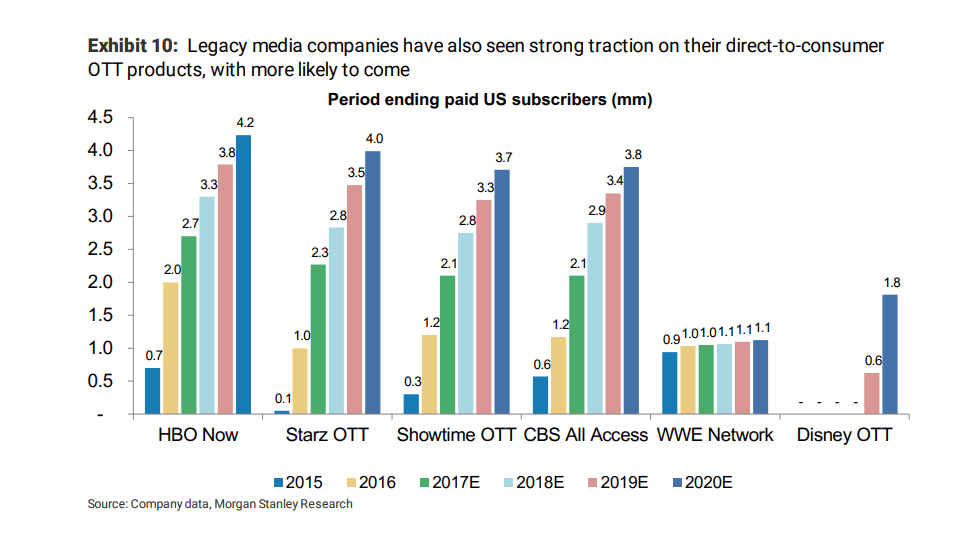 The above not only shows online subscriptions for HBO climbing, but shows it for practically every network.
The above not only shows online subscriptions for HBO climbing, but shows it for practically every network.
Meanwhile, Netflix*, the big daddy of all streaming services, continues to hit record numbers for subscriber growth, adding more than 8.3 million subscribers in Q4 2017 alone.
(*If it weren’t for internet services, cable TV companies would be dead. I suspect we’ll see Netflix make an attempt in the near future at buying these companies.)
While it may be a little farfetched to say technology killed the Olympics, the ways we view these events are certainly changing.
People are no longer skimming their Cable TV channels to view the Olympics. They’re streaming them from all kinds of online services, watching only the clips of events they want – many likely pirated.
As such, it becomes increasingly difficult for TV-ratings companies, like Nielsen, to track all of the different mediums broadcasting the Olympics.
Back in the golden age of cable TV, we would flick on the tube and browse the different channels to find something to watch. When the Olympics rolled around, we would watch that because it was easy – we really didn’t have much of a choice.
Today, things are different.
Today, streaming services, like Netflix, have more subscribers than cable TV.
And Netflix doesn’t stream the Olympics…(yet?)
How many of you have canceled your Cable TV? And if so, have you gone out of your way to watch the Olympics?
CLICK Here to Share Your Thoughts
My favourite Winter Olympic event is men’s hockey. But now that there are no more NHLers playing, I am less inclined to watch – even if I am still a Cable TV subscriber.
I am sure many feel the same way.
But what if technology could make the Olympics more competitive? What if athletes became superhumans that could do things that no human has ever done before?
Just as technology has killed the Olympics, technology can also bring it back…
The Rise of the Super Human

Imagine creating the ultimate Olympian that can run faster, jump higher, and swim incredible lengths without surfacing for air – all before the Olympian is born.
Imagine a future where parents can not only ensure their unborn children are healthy, but go so far as selecting their eye, hair, and even skin colour. How about muscle tone, height, or potentially intelligence?
I am talking about the creation of superhumans. And it’s happening right now.
But it’s not just for humans.

Imagine being able to create mini pigs and baby elephants that fit inside your palm.
Imagine being able to create roses the size of sunflowers, or super plants big enough to feed entire populations.
While this all sounds like it came straight out of a science fiction movie, some of this is already happening.
I am talking about genome editing – the ability to edit DNA sequences to achieve the results we want.
And its going to change the world…and fast.
Genome Editing
Genome editing is a method that allows us to change the DNA of living organisms.
While scientists use many different technologies to do this, the concept is rather simple.
These technologies act like scissors, cutting the DNA at a specific spot. Once cut, scientists can remove, add, or replace the DNA where it was cut.
While several approaches to genome editing have been developed, the one scientists are most excited about is CRISPR-Cas9.
The Rise of CRISPR-Cas9
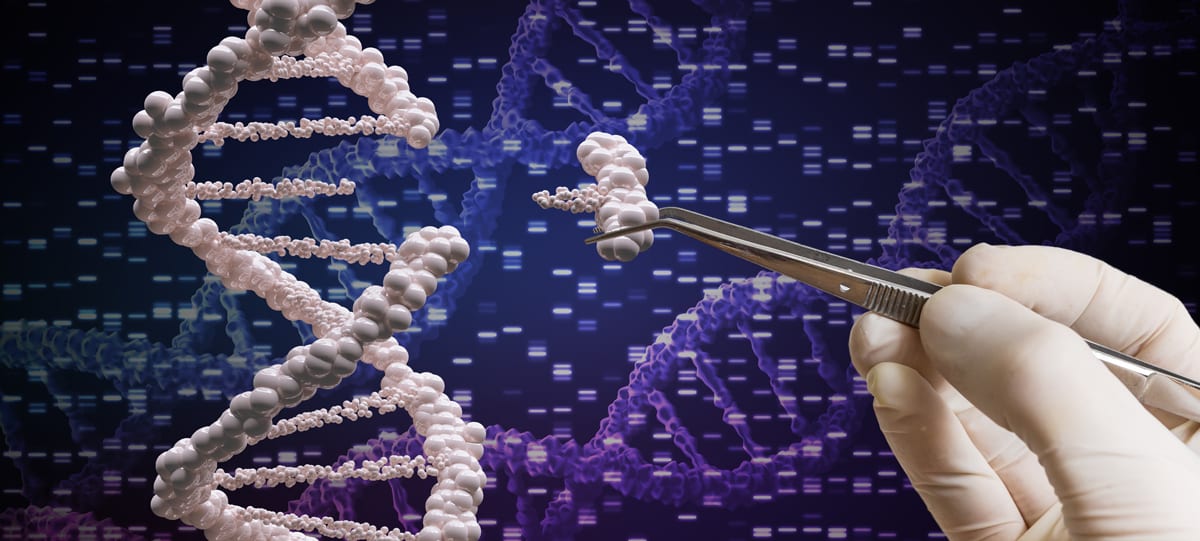
CRISPR-Cas9, commonly known as CRISPR, stands for Clustered Regularly Interspaced Short Palindromic Repeats – a series of short repeating DNA sequences with “spacers” in between them.
In Layman, it is a genome editing system that is faster, cheaper, more accurate, and more efficient than other existing genome editing methods.
Here’s how it works.
The CRISPR-Cas9 technology was modeled from a naturally occurring genome editing system in bacteria.
When bacteria are attacked by viruses, the bacteria capture snippets of the virus and uses it to create DNA segments known as CRISPR arrays.
This array helps the bacteria remember the virus.
Accompanying CRISPR are genes called Cas9, hence CRISPR-Cas9.
If the virus invades again, these Cas9 genes make enzymes, or something similar, that has the ability to “cut” into the virus’s DNA and essentially disable it.
In other words, CRISPR is a defense system that bacteria use to protect itself against attacks from viruses.
It’s one of nature’s most efficient genome editing techniques.
Here’s a short video on it:
If you think that we’re still in the really early stages of this technology, think again…
CRISPR is Here
Researchers have already added a new step to the CRISPR process by removing parts of the genetic code and replacing it with whatever they want after the DNA is cut by CRISPR-Cas9.
Just a few months ago in December 2017, the Salk Institute designed a version of the CRISPR-Cas9 system that’s capable of turning a targeted gene on or off without editing the genome at all.
That means researchers can now remove a specific gene responsible for causing particular diseases.
In fact, human trials using the CRISPR technology are already underway.
If you’re familiar with the medical research process, making it to human trials means the technology is nearing the final stages of becoming a reality for billions of people.
As you read this, China has at least eight CRISPR gene therapy clinical trials underway to treat various forms of cancer such as lung, bladder, cervix, and prostate.
And for the first time in European and US history, human trials for CRISPR are expected to happen anytime now.
In the US, doctors plan to extract blood cells from the patients and then edit the cells outside the body. Using CRISPR, the doctors will delete two specific genes from the T cells (a type of white blood cell responsible for adaptive immunity, like soldiers who seek and destroy invaders). One is a PD-1 molecule that cancer cells exploit to stop the immune system from fighting back. The other is a receptor that T cells use to detect dangers. Once removed, the doctors will then replace that receptor with an engineered one designed to direct T cells toward tumors and fight them. After, they’ll reintroduce them back into the patient’s bloodstream.
In Europe, researchers will be focused on a blood disorder known as beta-thalassemia.
In other words, the world of genome editing in humans is here.
And it’s going to have a massive impact on just about everything.
CRISPR to Change the World
It goes without saying that one of the biggest impacts of CRISPR will be in biotech and pharma.
If CRISPR can correct the genetic errors that cause diseases, then many of the drugs used to treat these diseases will become obsolete.
In 2017, CRISPR already showed success in its ability to eradicate a disease.
Via Washington Post:
“Scientists have successfully edited the DNA of human embryos to erase a heritable heart condition that is known for causing sudden death in young competitive athletes, cracking open the doors to a controversial new era in medicine.”
But that’s only the tip of the iceberg.
Last year, a team of Chinese researchers successfully increased resistance to HIV in mice by replicating a mutation of a gene that effectively prevents the virus from entering cells. And while this has only been tested on animals, there is a strong reason to believe it will work in humans.
That’s because a small percentage of people already have a genetic mutation that actually encourages HIV resistance. Using CRISPR, scientists can copy this mutation and introduce it into the DNA of human stem cells that lack it and thus, boost HIV resistance in humans.
What about the human papillomavirus (HPV)?
In July 2018, China will begin to use CRISPR to disrupt the genes of HPV and destroy it.
What about the growing fears of super bacteria?
CRISPR may be able to solve that, too.
In a 2017 trial, researchers were able to CRISPR-engineer bacteriophages (a virus that infects bacteria) to save the lives of mice infected with antibiotic-resistant infections.
The list of potential applications of CRISPR within the health sector are vast and we’ll soon see many human trials using CRISPR to combat diseases in the coming years.
But CRISPR is much more than just a way to combat diseases.
Since it can alter DNA, it can essentially be used across all life forms.
Take food, for example.
CRISPR to Change Food & Agriculture

CRISPR gene editing in food is already here.
Last year, scientists from Cold Spring Harbor Laboratory in New York used CRISPR to increase the yield of tomato plants by developing a method to edit the genes that determine tomato size, branching architecture and, ultimately, shape of the plant for a greater harvest.
Via Cold Spring Harbor Laboratory:
“Scientists at Cold Spring Harbor Laboratory (CSHL) have harnessed the untapped power of genome editing to improve agricultural crops. Using tomato as an example, they have mobilized CRISPR-Cas9 technology to rapidly generate variants of the plant that display a broad continuum of three separate, agriculturally important traits: fruit size, branching architecture and overall plant shape. All are major components in determining how much a plant will yield. The method is designed to work in all food, feed, and fuel crops, including the staples rice, maize, sorghum and wheat.”
You may be thinking: “Well, isn’t that just GMO, a genetically modified organism?”
Not technically.
GMOs are made by adding foreign DNA sequences into a crop’s genome.
CRISPR, on the other hand, is able to make precise alterations to genes in specific locations of the native genome without the introduction of foreign DNA.
 In 2016, DuPont Pioneer announced a new variety of CRISPR-edited corn that is technically not a GMO and plans on bringing this to market by 2020. Meanwhile, A gene-edited mushroom has already bypassed U.S. Department of Agriculture regulation.
In 2016, DuPont Pioneer announced a new variety of CRISPR-edited corn that is technically not a GMO and plans on bringing this to market by 2020. Meanwhile, A gene-edited mushroom has already bypassed U.S. Department of Agriculture regulation.
Get ready for CRISPR vegetables. Pun intended.
If CRISPR can alter vegetables and plants, could it alter other foods too? Foods such as meat?
In October 2017, scientists at the Chinese Academy of Sciences in Beijing used CRISPR to genetically engineer pig meat that had 24% less body fat. They did this by inserting a mouse gene into pig cells that helped the pig better regulate its body temperature.
While this example technically makes the pig a GMO product, it goes to show you how far CRISPR can go in changing society altogether.
Will you eat CRISPR-engineered food?
CLICK HERE to Share Your Thoughts
And while we’re on the topic of pigs…
Designer Pets and Babies
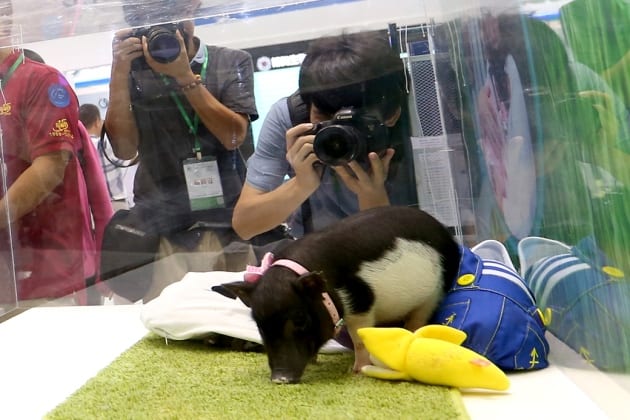
In 2015, the Beijing Genome Institute (BGI) created “micro-pigs” by removing a gene associated with growth. (Yes, the above picture is a real micro-pig!)
Where a pig would normally weigh about 100 pounds, these pigs grew to just 30 pounds. And while BGI didn’t use CRISPR to edit the genes, it shows that genome editing can have vast affects on pigs.
The Netflix movie Okja, a movie about a genetically modified pig that tastes great and is big enough to feed hundreds of people, is not as far-fetched as people may think.
If we know where a certain gene is located, such as a gene that directly correlates with hair colour, CRISPR allows us to cut that colour out and change it to a different colour.
By this logic, we could create mini pet elephants. We could even bring back extinct animals such as the Woolly Mammoth, or even dinosaurs. Yes, those are in the works also!
Furthermore, parents could hypothetically modify their unborn children by editing the genes that control height, muscle tone, and even eye colour. Designer bespoke babies, so to speak.
And as we mentioned earlier, that means we could create super Olympians capable of running faster or jumping higher in the near future.
Our Future with CRISPR
The amount of applications CRISPR technology can have are essentially as infinite as life forms itself.
That’s because we can use CRISPR to mix-and-match all kinds of DNA sequences, for better or for worse.
We’re going to see numerous technologies using CRISPR emerge.
Finding a CRISPR company in its early stages could reap significant rewards for early investors.
What are your thoughts on genome editing? On CRISPR?
CLICK HERE to Share Your Thoughts
Times are Changing
From the death of cable TV to the potential death of numerous drug makers, technology is rapidly changing the landscape of how we invest.
Many years ago, it would have been smart to invest in cable TV companies. More recently, it would have been smarter to invest in Netflix.
Today, it may be smart to invest in food and agriculture. Tomorrow, it may be smarter to invest in companies that modify them.
Times are changing and changing fast. Be sure to adapt your investments to these changes.
With that being said, let’s settle down into the present and find our way around this market.
A Market Lesson of Great Importance
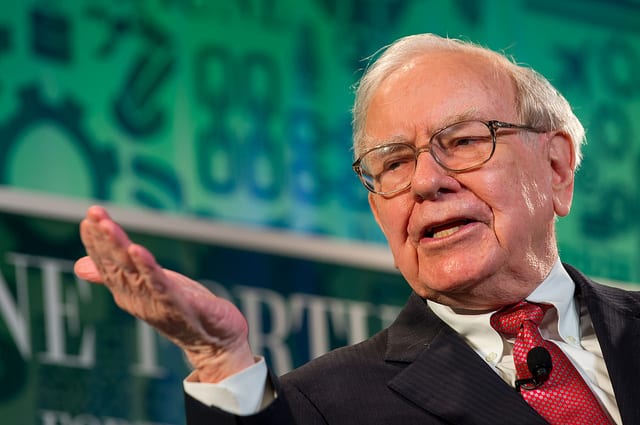
Berkshire Hathaway is one of the most successful conglomerates in the world, reaping returns on average of over 19% per year compounded annually.
Every year, Warren Buffett and his uber successful Berkshire Hathaway releases its annual letter to shareholders.
It’s a letter of great importance as it teaches not only fund managers, but investors around the world the simple philosophies of investing – all without confusing the average retail investor.
I’d like to highlight one excerpt from this letter that I feel is of great importance for us.
Ten years ago, on December 19, 2007, Warren Buffett made a bet with Protégé Partners.
His bet was simple:
A simple investment into the S&P 500 index would deliver better results than putting your money with the smartest investment professionals.
Via the Berkshire Hathaway’s Annual Letter:
“I made the bet for two reasons: (1) to leverage my outlay of $318,250 into a disproportionately larger sum that – if things turned out as I expected – would be distributed in early 2018 to Girls Inc. of Omaha; and (2) to publicize my conviction that my pick – a virtually cost-free investment in an unmanaged S&P 500 index fund – would, over time, deliver better results than those achieved by most investment professionals, however well-regarded and incentivized those “helpers” may be.”
Warren Buffett’s belief is that American investors “pay staggering sums annually to advisors, often incurring several layers of consequential costs.” Yet, investors could do better by simply investing in an unmanaged S&P 500 index.
So the bet was on.
Warren Buffett would pick the S&P 500.
Protégé Partners would pick five “funds-of-funds.”
Here’s how the bet shaped out:
“Essentially, Protégé, an advisory firm that knew its way around Wall Street, selected five investment experts who, in turn, employed several hundred other investment experts, each managing his or her own hedge fund. This assemblage was an elite crew, loaded with brains, adrenaline and confidence.
The managers of the five funds-of-funds possessed a further advantage: They could – and did – rearrange their portfolios of hedge funds during the ten years, investing with new “stars” while exiting their positions in hedge funds whose managers had lost their touch.
Every actor on Protégé’s side was highly incentivized: Both the fund-of-funds managers and the hedge-fund managers they selected significantly shared in gains, even those achieved simply because the market generally moves upwards. (In 100% of the 43 ten-year periods since we took control of Berkshire, years with gains by the S&P 500 exceeded loss years.)
Those performance incentives, it should be emphasized, were frosting on a huge and tasty cake: Even if the funds lost money for their investors during the decade, their managers could grow very rich. That would occur because fixed fees averaging a staggering 2 1/2% of assets or so were paid every year by the fund-of-funds’ investors, with part of these fees going to the managers at the five funds-of-funds and the balance going to the 200-plus managers of the underlying hedge funds.”
In the end, here’s what happened.
Take a look:
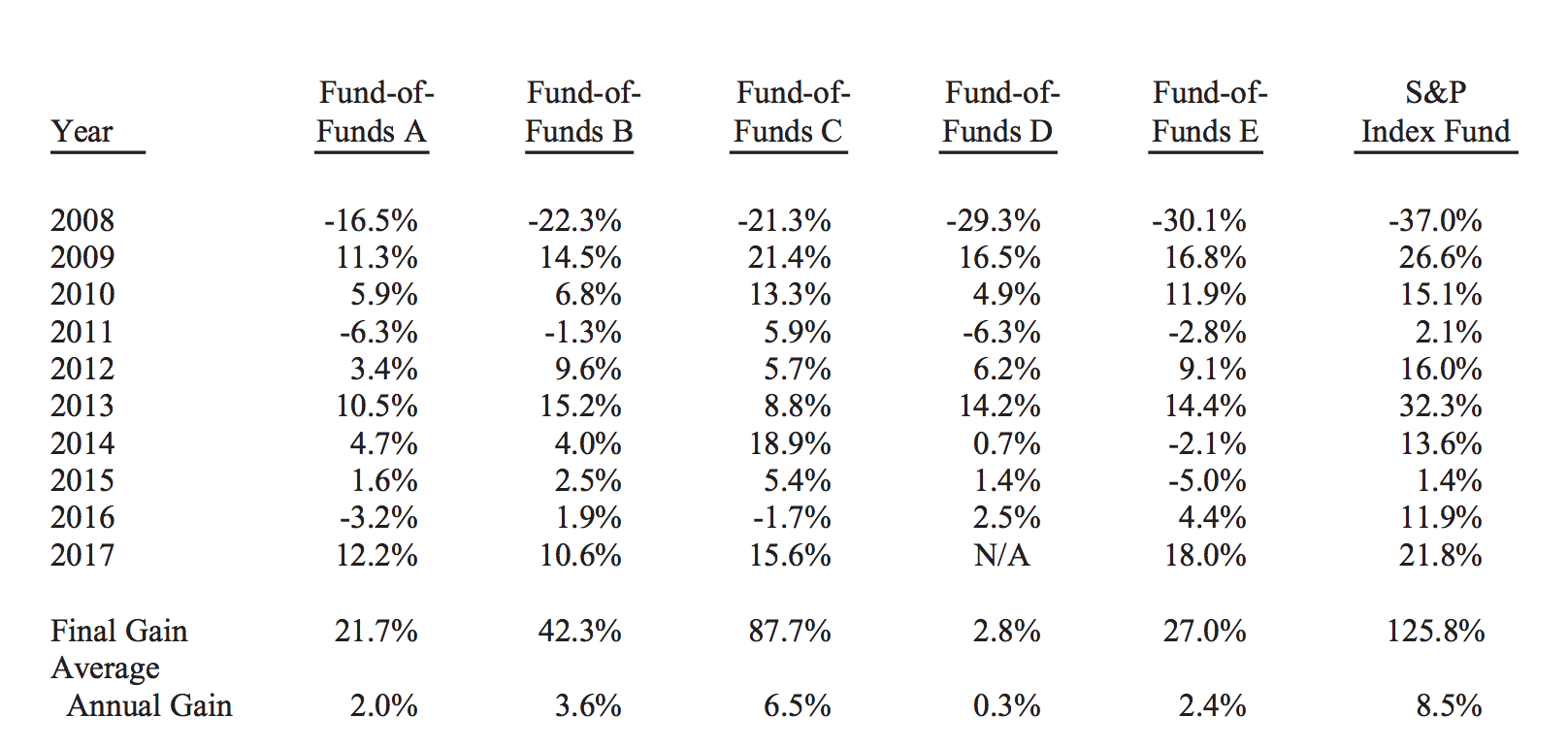
The S&P index was the clear winner – a mindless clear winner against a group of the top investments minds on Wall Street.
Now to the part of what I believe to be one of the most important lessons investors can learn:
“Though markets are generally rational, they occasionally do crazy things.
Seizing the opportunities then offered does not require great intelligence, a degree in economics or a familiarity with Wall Street jargon such as alpha and beta.
What investors then need instead is an ability to both disregard mob fears or enthusiasms and to focus on a few simple fundamentals. A willingness to look unimaginative for a sustained period – or even to look foolish – is also essential.”
Too often, especially in this modern age of speed, investors think too much with a short-term mentality.
As I mentioned in a past letter, “The Shocking Truths About High Frequency Trading,” investors have become traders, relying and reacting too much on the near term up-and-downs of the market:
“…investors now hold stocks on average for only five days; compare that with the eight years in the 1960s.”
It is much more important to recognize the true underlying fundamentals of any company that you invest in, rather than the day-to-day swings.
That means not relying and putting so much emphasis on down days caused by short reports or the talking heads. It also means not putting too much emphasis on up days caused by long reports – including the Special Editions Reports we issue.
It is important to note, however, that as the market continues to remain at, and potentially surpass, all-time highs, investing in the S&P may not be as fundamentally safe as it sounds.
There is a reason Warren Buffett is once again sitting on a record amount of cash for his funds.
In his annual letter to Berkshire shareholders, Buffett said finding things to buy at a “sensible purchase price” has become a challenge and is a major reason Berkshire is awash with $116 billion of low-yielding cash and government bonds.
In other words, not only does he feel that investable assets may be a little expensive in this environment, but he could be hoarding his cash, potentially waiting for the next market meltdown – as he did in 2008.
I, too, am now awash in low-yielding cash and government bonds.
And that’s saying a lot, having made the bulk of my financial net worth on speculative investing.
But does that mean I am no longer investing/speculating?
Not at all.
I am just becoming much more selective in the companies I invest in. These companies should not only have enough cash to survive most downturns, but should also have a strong underlying fundamental business or technology.
In this environment, where valuations are high and corporations are ripe with cash, I believe my returns would be better served by investing in smaller, more nimble companies that have not received as much exposure as the big boys trading at high multiples.
Just as I mentioned in last month’s letter, with big corporations sitting on a massive cash position, investing in the smaller firms makes more sense since the big corporations may use their cash piles to buy out the smaller guys.
Over the next few weeks, I plan on introducing you to some of these companies: companies with strong underlying business fundamentals who have cash or revenue to sustain themselves, should the market turn.
Gains are still ahead of us and I plan on taking advantage of this while I still can.
Seek the truth,
Ivan Lo
The Equedia Letter
www.equedia.com
Disclosure:
Equedia.com and Equedia Network Corporation are not registered as investment advisers, broker-dealers or other securities professionals with any financial or securities regulatory authority. Remember, past performance is not indicative of future performance. This article also contains forward-looking statements that are subject to risks and uncertainties that could cause actual results to differ materially from the forward-looking statements made in this article. Just because many of the companies in our previous Equedia Reports have done well, doesn’t mean they all will.





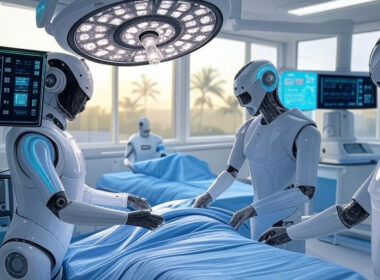







Holding stocks for a long time can be VERY DANGEROUS. Ask those who held grimly to ENRON. The same applies to GE and IBM.
I am not convinced that holding shares for a long time is a necessary ingredient for making money on Wall Street.
Instead, I look for dividend-paying companies which have ZERO or a small long-term debt. So far, it has worked out fine.
Try it sometime.
The point you are missing by choosing a few troubled stocks as examples is the power of diversification. I can easily argue your point with examples such as Amazon, Apple, Netflix and Nvidia!
Good report, funny you mentioned Warren B’s annual letter, because as you mentioned you feel Warren may be waiting for the market to come to him, great point — I’ve been reading these letters just a few years but this letter really didn’t strike me as being really positive, its tone was more subdued. Would like to hear what other readers thought, or is it just me?? Warren is sending us a message, ” be careful with your investments”, IMO
Thanks for sending this letter out, always enjoy reading it and getting your views on different topics.
Gord P
Wonder if NXO is still included in his list of companies to own?
Everything and everybody will be affected by AI automation and other associated automatons. working will become just another hobby as everything will become self serve… while the rich get richer the divide between the haves and have nots get deeper… times are a changing and with change comes chaos war and death…. imho, its almost time to invest in the military industrial complex…
I don’t agree, but then I often don’t agree with the common wisdom.
Despite being no longer able to access my own CBC network over my OTA antenna I fiddle with my rotor and hope for good weather to access all I can of the olympics. For the most part olympic athletes are far superior to the over-hyped, over paid professionals.
Read your history books, We are on the verge of extinction. I do not believe that technology is going to replace the disappearing insects, the disappearing wildlife, the disappearing forests, and the undrinkable water. We have all we need to create a better world but we are too profit driven, too egotistical to pay attention to the many messages that we must change our ways dramatically now
It will be interesting to see which direction the CASPER gene editing will take our society. There could be a lot of practical uses for it which the article mentioned like making pets smaller or changing our looks but there is also the ways it can help medically. A lot of diseases will be able to be cured and prevented when we manage to make this technology work on humans.
For the investing advice, I would say that not focusing day to day changes is great as long as the market you are investing in isn’t volatile. The stock market is usually gradual with it’s increases/decreases for stock prices so it’s better to keep track of them on a weekly or biweekly basis.
I would say a large part of the viewers during the 2018 Olympics are sleeping or at work during the events. South Korea isn’t in an ideal time zone for westeners to be able to catch the Olympic events. Personally CBC.com/app or CBC over-the-air was my way of watching the Olympics, and I tried to watch as much as possible.
Pro genetic engineering Technology!
Id like to see artificially grown Organs, like Muscle, so i can eat cheap Meat – without that 1 Animal has to die.
I like to see healthy Humans with long LifeSpan and long Youth – maybe improved Humans with NightVision and Power to lift 1 Car with your Arm, powerful like Ants.
I registered for this research recently, and thanks Ivan for bringing good articles and investment ideas to your subscribers. I was reading through your article, but didn’t see any mention of companies who are in this field, actually there are 3 companies that I follow who are in this field, but didn’t see any mention of them in your article.
CRISPR-Cas9 is a game-changing technology. It has allowed us to do things that will continue to have a major impact on the future of science.